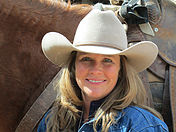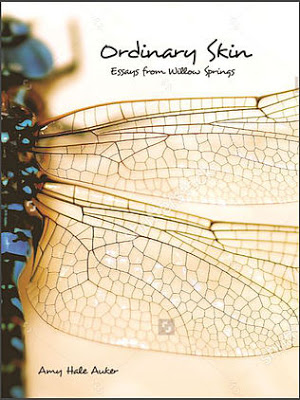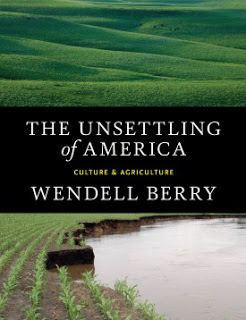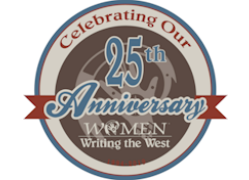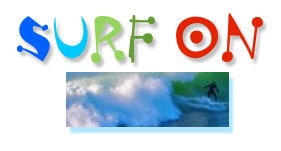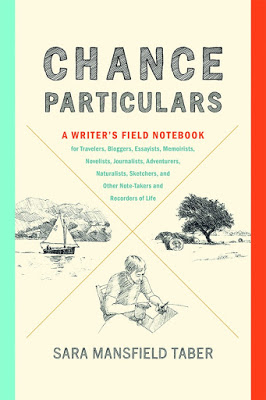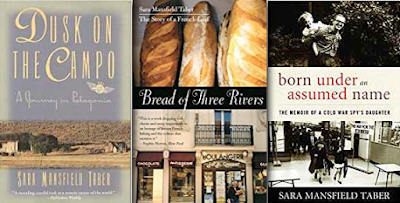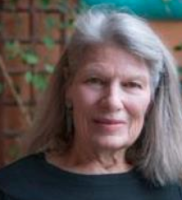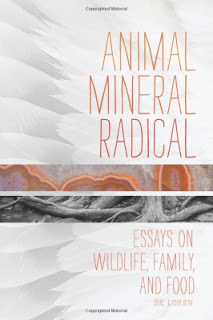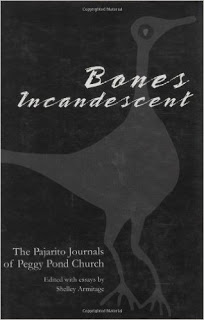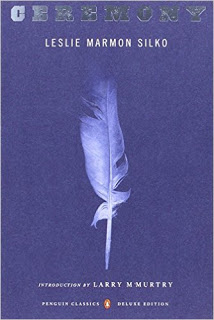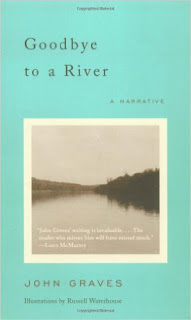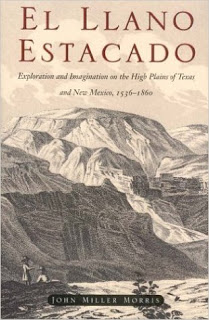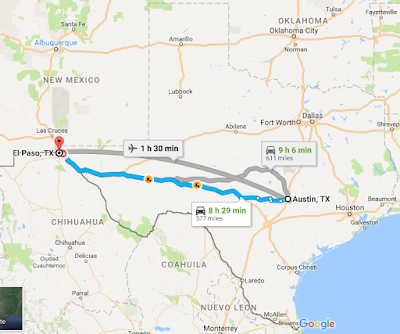BY C.M. MAYO — March 20, 2022
UPDATE: This blog was then entitled Madam Mayo (2006-2022).
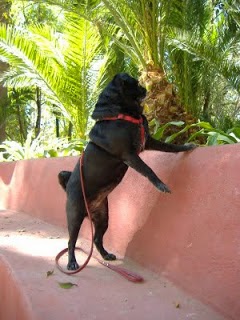
If you’ve been following this blog, you’ve probably noticed that, as I transition my webpage from its original software to WordPress (…it will happen…), I’ve been pulling essays and other materials off my website and posting them here. This Monday I’m posting an essay that’s (ohmygosh) nearly 20 years old.
“The Essential Francisco Sosa or, Picadou’s Mexico City” originally appeared in Creative Nonfiction: Mexican Voices (2004) and won both the 2005 Washington Independent Writers Prize for Best Personal Essay and a Lowell Thomas Award for Travel Journalism. It was also included in the anthology edited by Lee Gutkind and with an introduction by Ilan Stavans, Hurricanes and Carnivals (University of Arizona Press, 2007).
I don’t see many things, nor feel about them, the way I did then; still, it’s an essay I’m proud to have written, and will form part of the collection of essays I’m currently assembling about Mexico and the US-Mexico borderlands.
She’s been gone over Rainbow Ridge for some years now but, verily, pug Picadou was the Princess of the Cosmos.
*
“The Essential Francisco Sosa or, Picadou’s Mexico City”
by C.M. Mayo
The apocalyptic city is populated with radical optimists.
— Carlos Monsiváis
“Identity Hour, or, What Photos Would You Take of the Endless City? (From a Guide to Mexico City)”
Walking, I am sure my little black pug Picadou would agree, is the essential part of our day. If Picadou could talk, I think she would say that grass is nice, but humans and canines—their smells, habits and whereabouts (or nowhereabouts)—are the most interesting. So when we go for our afternoon walk down the Avenida Francisco Sosa, which has tall trees, whose branches hold hands across the street, we don’t mind the lack of grass.
But first we have to hurry down our own narrow street. Beneath the canopy of bougainvillea and lavender wisteria, birds chuckle; a gecko slithers up a wall into ivy. Weeds and tufts of grass poke between the cobblestones; Picadou picks her way eagerly, but carefully as a cat.
In the length of a ball’s toss we’re in the alleyway of Montecristo, aiming straight at the Avenida Francisco Sosa. Most of Montecristo is spanned by the jail-high wall of the pumpkin-colored house that was listed by Sotheby’s for several million dollars, but took as many million years to sell (I suspect at a much lower price than was asked) because, after all, its front door is on an alleyway. Here, the sidewalk is only two flagstones wide and cars barrel past fast over the jumbled stones, the chassis’ creaking and tires bumping. Picadou does not like me to, but I pick her up and carry her. To avoid the lamp post, I have to step down into the street; then, after waiting for a VW van to rattle past, I step down again to go around a smashed beer bottle. There goes the Domino’s Pizza delivery scooter: put-put-put.
Once on the Avenida Francisco Sosa, we do not turn right and visit Ingrid, who is blonde and from Sweden and has a lipstick-red chair at her desk in her L’Arlequín shop, because she has that Akita. He lies there among the pottery lamps and pewter trays, quiet as a rolled-up rug, but his ears are always pricked. Ingrid told me that once, years ago when she had her other Akita, a man slipped in and held a knife to her throat and the Akita attacked him. If we were to turn right and trot past Ingrid’s shop (very quickly), in another block we would come to the house of the conquistador Pedro de Alvarado. This house is the headquarters of the Octavio Paz Foundation, but Picadou is not allowed into the bookshop or into the garden with its burbling fountain and sweet-smelling orange trees, and so — Picadou has decided — we bear left.
Picadou, who is in her purple halter, pulls hard. She may be tiny enough to snooze on my lap while I work, but she is a solidly muscled, 16 pounds of willful pug. Multo in parvum—a lot of dog in a small package—is the motto of the breed. Before Picadou, I had two male pugs, Foo and Ti. When he was young, in a flying rage at the sound of the doorbell, Ti broke the hall door off its hinges.
When we cross it from Montecristo, we are nearly a third of the way down the nearly mile-long Avenida Francisco Sosa. It begins a few blocks before Ingrid and her Akita, at the baroque gem of a chapel called Panzacola, and ends—a straight shot east—at the bustling main plaza of El Jardín del Centenario, where we will arrive in about 15 minutes. A broad, one-way street, paved with oyster-gray cement bricks, Francisco Sosa is the main artery of historic Coyoacán, which nestles within the borough of the same name. Coyoacán—in Nahuátl, “The Place of Those Who Keep Coyotes”—is in the south of the megalopolis of Mexico City. With over 20 million inhabitants, Mexico City may well be the largest in the world, the “Super-Calcutta,” as Carlos Monsiváis lampoons it, “the post-apocalyptic city” and “the laboratory of the extinction of the species” — not that Picadou would care a snuffle about any of that.
Here, on Francisco Sosa, it feels refreshingly green and scaled down to a walkable coziness. Most of its buildings date from the 18th century, and as is the style in Spanish Granada and Córdova, their roofs are flat, their windows resolutely barred, and the walls edge right up to the sidewalk— though with touches of New World color: papaya, pink, ocean-blue, and spangled with the gray-tinged light that falls through the trees. Gardens and patios are hidden from street-view, though yellow and pink bougainvillea spill over an adobe wall and, here and there, peeks the wiggy head of a palm tree. Where the walls make corners into doors there are urgently fascinating smells that Picadou must stop to sniff.
When the conquistadors arrived in 1519, Coyoacán was a village on the southern shore of the lake that surrounded the Aztecs’ island capital of Tenochtitlán. To the west stretched fields of corn and agave; to the south, a 6 x 2 1/2 mile bed of soot-black lava from the eruption of Xitle, one of the many volcanos that ring this high-altitude basin. Over the centuries, Coyoacán has been engulfed by Mexico City, the lake filled in and, like the fields and the lava bed, ribboned with expressways and blanketed over with houses and apartment buildings, universities and schools, banks, supermarkets, a Sears, a Price Club and sushi bars galore. Not to mention all tho se Domino’s Pizzas.
Fortunately for Picadou, the coyotes are long-gone. But I worry about the callejeros, the strays. They can lunge and bite. Because of them, I carry this walking stick. I’ve yet to whack a dog with it, but I’m not shy: When I need to, I wave it around or bang it on the sidewalk and shout, “No!”
Suddenly Picadou’s scruff bristles and she lets out sharp, squealing barks. Behind a door, a spaniel answers her with fierce, deep growls and he runs back and forth, his toenails scrabbling on the bricks. His snout pokes out from under the door and he snarls. Picadou woofs right back. The mutts across the street start yipping and howling. One of them, what looks like a beagle-poodle, is up on the flat-roof of the service quarters bouncing: boing, bark! Boing, bark!
As I yank her away, Picadou squeals with outrage. In an instant, however, all is forgotten, and she trots on down Francisco Sosa, her nose high and her little tail curled tight over her back. Her tags clink as she walks. Meanwhile, I’m on the lookout for the chow chow I’ve often spotted wandering without a leash. He’s someone’s pet — his cinnamon-colored fur is always brushed — but whose? That chow chow can be mean, and I have reason to worry: A friend of mine was out walking his dog — a terrier about Picadou’s size — when a loose boxer attacked it. Two days later, it died.
Picadou trots on, oblivious to the cars roaring by. A girl in hip-huggers and hoop earrings stops to ask, “¿Qué raza es?” What breed is it?
“Pug,” I say, as Picadou snuffles around her platform sandals.
“¿Qué?” The girl wrinkles her nose. But it’s hard to look at her face: She has a safety-pin through her eyebrow.
“Pug,” I say again.
“Pook?”
Having had pugs for the many years I’ve been living here, I have learned to be patient with this question. I say it once more, “Pug.”
“Ah,” the girl says, and she leans down. Picadou accepts the pat reluctantly, folding her ears back and letting her tail uncurl and drop slightly.
A few steps later, we’re at the corner of Francisco Sosa and Tata Vasco; a waist-high pile of garbage bags is almost always here on these half-dead and well-pissed-on agapanthus plants. I knew the people who once lived in this house, which, despite this mess of garbage on the corner, is an elegant house, a converted 18th century horse stable. They were both poets, Horacio Costa, who moved back to Brazil, last I heard, and Manuel Ulacia, who drowned while on vacation in Ixtapa. They were beautiful men, and they had beautiful dogs, an ink-black standard poodle, and a saluki with a swishy coat. Sometimes I would see Horacio walking them on their two, long leashes down Francisco Sosa. I had Ti and Foo, then. Once, Manuel invited me in for tea and Ti and Foo, frantic with excitement, zoomed all around the living room.
It’s funny what one remembers. It was so many years ago — six years? Seven? Now the house is empty. Cast from the skylight, a square of sun glows on the hardwood floor. Dust dances in mid-air. Who will live here now? I wonder. I think of how it once looked inside: the art, the antiques, a silver teapot.
Picadou is still sniffing. These garbage bags always pile up on this corner because the neighbors won’t tip the garbage man for daily pick-up; they just dump it out here. That’s Mexico City: unreliable and expensive public services, the tasteful next to the tacky, moneyed elbow-to-elbow with the hardscrabble. Francisco Sosa is one of the most distinguished avenues in the city, and yet I must be careful to avoid the rubble and the garbage and the dog shit—on every block there are several piles, and the smears where someone has stepped in it. Many walls, including this one, salmon-pink with a hand-painted tile depicting the Virgin of Guadalupe, are scrawled with spider-like gang graffiti. Like so much else in Mexico City, Francisco Sosa can be unsightly or it can be charming; it depends on what one notices. Picadou notices pee.
“That’s enough,” I tell her. I pull her away, and we step over a scattering of melon rinds.
The traffic on Francisco Sosa flies by: a van, a sedan, another (red blur) scooter. Then there is a break, and Picadou leads the way across Francisco Sosa and into the cool, high-ceilinged cave of La Factoría with its smell of fresh baked baguettes and sawdust.
Behind the gleaming chrome and glass of a refrigerated case, hangs a constellation of smoked ham legs. The counterman has his back to us, elbow up; he’s pressing a brick of cheese into the slicer which runs back and forth, rmmm, rmmm. One wall is filled with tins of lavender and mint candies, English teas and Belgian chocolates in blue and silver twists. The other, wines: Chardonnays, Chablis, and reds from California, Chile and Spain, and, best of all, boxes of tissue-wrapped bottles from Monte Xanic, a boutique winery in Baja California. I was thinking I would buy a few slices of Gruyère to share with Picadou, but there are three people ahead of me, and I don’t want to have to hold her on my hip for so long. As I go out, a woman, in capris and a flowered silk scarf, coos at Picadou.
“¡Que cosita!” (What a precious little thing) she says. Her silver bracelets clackle as she pats Picadou on the head.
Out on the street again, Picadou pulls me up to the massive car-port door dotted with iron studs. On the carved stone lintel is a suspiciously unweathered coat of arms: a pair of fighting lions and three stars crowned by a plumed helmet. The walls are ash-gray volcanic rock. I don’t like this house, because it is drab and looks fake. Picadou still has her nose down at the crack below the door: no dog here, today. Perhaps that grizzled collie is dozing in some sun-warmed corner of his garden.
Our shadows fall long against the walls. It is still warm — I feel the sun on my bare arms — but not uncomfortable. It rarely is at 7,350 feet above sea-level. Not long ago, Mexico City was, as Carlos Fuentes titled his novel, La región más transparente. Now, in this thin mountain air, particles, dust, and ozone make a crud-brown haze. My eyes are already smarting. The wind-blown grit makes Picadou put her head down and squint. Yet here, as we stroll in and out of the shade of the trees, it is easy to imagine that the grayish tinge in the air is because it is slightly overcast.
The next house we pass is even newer, painted an eye-popping aquamarine. It used to be raspberry-sherbet, and before that, kumquat. Set into the wall just below the intercom is a fist-sized stone face. I’ve often wondered if the owners found that when they put in the foundation some 10 years ago. My neighbors found a conch shell when they dug into their garden for a cistern; on the lot next door, archeologists uncovered a midden of pottery shards and a headless skeleton. They dug around some more for the head, but they never did find it.
Mexico City is so small it’s a pañuelo, a handkerchief, goes the saying. But for all the years I have lived here, I still do not know the name of the people who live only a few blocks away, or even what they look like. But I don’t feel bad about that; after all, of Mexico City’s more than 20 million inhabitants, some three million live in greater Coyoacán. That’s a whopper of a pañuelo.
Picadou is padding through a litter of purple bougainvillea blossoms, so bright on the dark, just-washed flagstones. At the edge of the sidewalk, a squirrel spots her and scrambles up his tree. Picadou says vile things to that squirrel, but she’s drowned out with the wooshing by of a tour bus, paneled to look like a trolley, its guide droning into a microphone, a mini-van, a motorcycle, and then a rattling, battered, blue bug that putts out a cloud of exhaust. A trio of policemen passes, bikes swaying as they pump their pedals. Their backs look square, funny turtles, in their bullet-proof vests.
They need them. I know several people who have been shot at, including my brother-in-law’s father, as he was driving on the main expressway (luckily, the bullet lodged in the dashboard). I have, at last count, 11 friends who have had guns pointed at their faces: some car-jacked, others kidnapped. No need to be wealthy; anyone who looks like they might carry an ATM card can be picked off the street. It seems no place is safe, even upscale restaurants. In several nearby, gangs with sub-machine guns have gone from table to table, filling pillowcases with wallets, purses, jewelry, watches. (One friend had the sense to drop her ring into a sauceboat of chopped jalapeños.) Even here in Coyoacán, one of the better neighborhoods, I never, ever, walk at night. In the afternoons, when it’s time to take Picadou down Francisco Sosa, I trust myself to feel what I need to know: If, when I pick up my keys, I sense jelly in my knees, we stay in our garden. Maybe that’s what works, or maybe I’ve just been lucky. Knock on wood. Or rather — the best I can do right now — I squeeze the knob of my walking stick.
So far, no sign of that chow chow. No callejeros, either. I’m scanning the sidewalk for broken glass and dog piles. I tug Picadou away from another fly-specked mess — “No!” I shout. The traffic is whizzing by, then it breaks for a moment; breeze shivers the magnolia tree and a shower of its leaves, heavy and leather-brown, hit the hood of the sedan parked below, tlick, tlick.
On the other side of the street, an old mansion has been converted to offices. Through the swung-open portal door, I catch a glimpse of terracotta-colored walls, hedges, and sprinklers pin-wheeling over a lawn. So many of these houses along Francisco Sosa are serving as offices, never mind the zoning regulations. Mexico City is growing at a Brobdingnagian rate, its new neighborhoods of gated condominios horizontales climbing the sides of the surrounding mountains, and the slums oozing out into the raw campo, now two, even three hours of driving from the city’s center. It seems incredible now, but 40 years ago, Coyoacán was still half Indian. A decade ago, my neighbors, squatters, sold rabbits and turkeys. Next door lived a very stooped old lady with snow-white braids, who would shuffle out in her huaraches to gather twigs. From my upstairs study, I could see the smoke from her chimney rising above the treetops.
When I first moved here in the mid-‘80s, La Factoría’s building housed a miscelania that stocked basics such as corn oil, Cokes, and Pingüinos (the Mexican version of the Hostess Ho-Ho). Wedged next door was La Pulquería las Buenas Amistades (the good friends’ pulque bar), an ancient magnet for the neighborhood’s equally ancient and toothless boozers. Oftentimes, when I was out walking Ti and Foo, I would find one stumbling along, or leaning against a wall. La Pulquería las Buenas Amistades (the good friends’ pulque shop) had decrepit swinging doors like the ones in a cowboy western — I half-expected Pancho Villa himself might barge out, twirling a pistol in each hand. From its bowels, one could sometimes hear ranchera music blaring from a radio. Pulque, for the record, is a foul-smelling drink of fermented agave. In my time, I think what they were drinking in there was rum and beer.
As for my squatter neighbors, one awful morning, eight men pounded open the metal doors and they were evicted and their rabbit hutches and bird coops torn down. Within weeks, the lot grew over with a thick tangle of scrub and flowering poinsettias. I have seen the owner of that lot, the car he drives, the watch he wears. I can imagine the satellite dish he will put on his roof. It will have to be a big one, and up very high because all around us are tall trees: pines, palms and figs, sun-silvered ficuses, jacarandas matted with luxuriantly dripping bougainvillea.
Bohemians, on the other hand, are still a colorful presence. Coyoacán is famous for its painters, from Doctor Atl to Diego Rivera, as well as actors, dancers, musicians, poets, writers; the bus and the metro bring ever greater numbers of hipitecas, punks, jewelry vendors and tarot card readers, who gather in a roiling mass in the main plaza. But Coyoacán is equally famous for its political figures, beginning with Hernán Cortés, who established his capital here after having left Tenochtitlán a smoking ruin of rubble. In the last century, the former King of Rumania lived here, as did Leon Trotsky, who was assassinated as he worked at his desk, bashed in the head with an ice ax. President Carlos Salinas grew up in a house a block off Francisco Sosa; President Miguel de la Madrid still lives on Francisco Sosa, up near the chapel of Panzacola, in the unassuming house he built when he was a young lawyer working for the Bank of Mexico.
Now the balance is tipping toward toward all those lawyers, politicians, doctors and economists, those who, like me, buy their chotchkes at Ingrid’s L’Arlequin and their Gruyère and Monte Xanic at La Factoría.
Here come some tourists: Germans, I can tell by their gum-colored shoes. The man has a sunburnt nose and, beneath her straw hat, the woman’s eyes are slack with exhaustion. I’m guessing they’re having a hard time with the altitude. In English, they ask me for directions to the house of Frida Kahlo. I show them on their fold-out map. It’s a good half hour’s hike away; they walked in the wrong direction from the metro. Picadou, who has been sitting nicely, is expecting a pat, or at least a little admiration. When the Germans walk away, she barks at them, “Woof!”
We are nearing the Plaza de Santa Catarina where, from Las Lupitas, cooking smells, greasy and beefy waft into the street. And now— this is Picadou’s favorite part— I loosen the lease and she dashes, sending up the pigeons in a cooing, fluttering cloud.
Here, in the heart of the little plaza, sparrows chitter in the trees, and there, among the azaleas, flits a butterfly. On a bench, a boy in a sheepskin vest strums a guitar— not for money, just for himself.
Santa Catarina may be a pocket-book of a plaza, but to me it is the most enchanting in all of Mexico City. The 16th century church, painted mango and cake-frosting white, bounds one side, a stone wall another, and then in a line, Las Lupitas, another café, a lilliputian theater, and, a careful scoot away, a fastidiously maintained French empire-style house. Along the plaza’s south side runs the Avenida Francisco Sosa with its casa de cultura deep with gardens, more tall, leafy ash trees, and splashes of flowers.
Here comes a toddler, running from his mother. But he hesitates; he stands a few feet off, his finger in his nose. His mother clucks and says, “que chistoso wow wow,” (what a funny-looking doggie) and she takes the child by the hand and leads him away.
Not everyone appreciates Picadou, do they? But she never takes things personally. She looks up at me with her long-lashed, sherry-brown eyes. I’m ready, she’s saying. Let’s get going!
I set her down and, as she always does, she ambles to the back of the plaza to the bust of Francisco Sosa. A gentleman with a curled mustache, don Francisco gazes on stoically as Picadou’s nose, sniff sniff sniff, moves up, down, and all around the corners of his pedestal. Poet, novelist, founder of a literary journal, newspaper reporter, memoirist, historian, biographer, bureaucrat, Congressman, Senator, and then Director of the National Library, the flesh-and-blood Francisco Sosa retired in 1912 to spend the rest of his days in his house that still stands near the end of this street. The avenue was named in his honor in 1951. Before that, it was the Avenida Juárez, and before that, El Paseo de Iturbide. Under the Spanish Viceroys this street was, most grandly, Calle Real de Santa Catarina. I don’t know what the Indians called it; but their kings had such tremendous names, Huitzilihuitl, Techotlala, Tezozomoc — I like to think they had one just as deliciously tongue-twisting.
A bedraggled cocker spaniel wanders up and begins sniffing at Picadou. She sniffs back, and now they circle, each trying to get the better angle at the others’ nether parts. I know this cocker spaniel; she lives on the little street behind the theater, in the yard of a tin-roofed shack. Her owners don’t walk her on a leash; they just let her out every now and then to andar (to wander), as they say. I worry about the dogs getting run over — there are so many cars. Once it was a pug out by the supermarket that is now a Wal-Mart, just a few blocks from Francisco Sosa. People stopped me on the street to tell me, afraid that it was Ti or Foo.
The cocker spaniel’s honey-colored coat is such a filthy, matted gray it makes me sigh. It is hard to tell sometimes which dogs are strays and which just look like strays. When the dog catchers make their periodic sweeps through the neighborhood, all dogs without a collar get picked up. That’s it — they gas them.
Not that Picadou is the only collared, leashed, and pedigreed pup who prances down Francisco Sosa. There were Horacio and Manuel’s standard poodle and saluki; and many times I have also seen an Irish setter; a dachshund; a xoloescuincle (Mexican hairless dog); rottweilers, golden retrievers, and Labradors. For a time, there was an American who would walk her pair of impeccably fluffed bichon frisés. Once I crossed paths with a man in a white linen suit walking a Chihuahua. Ti and Foo wanted to sniff it, but it shivered and cringed behind its owner’s legs.
“Ay!” Another teenager, this one with her boyfriend: “It’s soooo cute!”
The boyfriend, who is in a leather motorcycle jacket, rolls his eyes.
“Can I pat her?” She is already holding her hand down for Picadou to sniff.
“Sure,” I say.
“Ay,” the girl says again. “Her fur is like mink!”
Picadou, for the first time today, wags her tail. When the girl and boy walk away, Picadou tries to follow, and when I pull her back she yips. They turn around, the boy’s arm circling the girl’s waist, both laughing. The girl blows Picadou a kiss.
No sign of that chow chow yet. We’re walking on down Francisco Sosa again, behind the church, passing the corner miscelania. In its shadowed doorway, a cat arches its back and hisses. Here the sidewalk widens. There’s that jowly mastiff: He’s sleeping, fur mashed up to the iron bars of his gate (when he’s been startled, his barks can be fearsome). And then, just past the snoozing mastiff, sits an Indian woman in rags, her shawl-covered head resting against the wall. The ragged bundle in her lap, I guess, is her baby. I pick up Picadou, so as not to frighten the woman, and, clamping my walking stick in my arm, dig into my pocket for a coin.
“Dios le bendiga,” (God bless you) she says, and her hand disappears into the rags.
In the main plaza a few blocks down, there are more beggars, Indians from the campo who have lost their land, or whose crops have failed. This, too, is Mexico: stark poverty, even here in the prettiest part of Coyoacán, one block from the ballet school, where the Jeeps and Windstars and Ford Explorers are emptying out the little girls in their leotards and tutus. Behind the wheels, the mothers, slender and well-groomed, talk into cell-phones.
“¿Qué raza es?” A blonde girl in pink slippers wants to know.
“Pug,” I say.
“¿Qué?“
One of the mothers rolls down a window and says, “Es un sharpei, ¿verdad?“
There are days when I would like nothing better than to be living somewhere else: someplace I could let Picadou romp over a park’s grassy lawns, where the air is clear and no one asks for money. There is a park near my house, Los Viveros, the city’s nursery, two blocks parallel to the upper part of Francisco Sosa. It has towering rows of eucalyptus, pines, palms, cherry trees and oaks, and best of all, lush meadows where people lie soaking up sun, or practice karate or tai chi. I walk there every morning, but alas, dogs are not allowed, and the guards at the gates make sure of that.
At the corner the traffic from Ayuntamiento cuts diagonally across Francisco Sosa in a fast and heavy stream. While we wait to cross, I get a view of a German shepherd, half a block ahead, squatting in the middle of the sidewalk. Just as I expected, the owner and his dog walk on, leaving the pile to nature, or someone’s shoe. Never, in all my years of walking Francisco Sosa, have I seen anyone use a plastic bag to pick up after their dog.
Ni modo, as they say, no matter. We walk wide around it.
Good citizen I may be with my own plastic bag at-the-ready. But, oh, the mingy questions I ask myself every afternoon when we walk down Francisco Sosa: why don’t I do more to help the beggars? How can I think of feeding my dog slices of an expensive cheese, knowing that there are hungry children? How can I have paid hundreds of dollars for a pedigreed pug when there are uncounted callejeros?
I came to Mexico as a development economist at the starry-eyed age of 26. I trudged out into the slums and the campo; I taught, made speeches, consulted for the World Bank, wrote newspaper and magazine and journal articles and even two books on development finance. Maybe all of that did some good, I don’t know. Here in Mexico, in the rest of the developing world: Côte d’Ivoire, Honduras, Pakistan, and even tucked behind the imperial splendors of Washington, D.C., there is terrible, gaping need. When I think of it — and in Mexico City, I think of it every time I go out my front door — I feel as if I am peering over the ledge of a black abyss. I have a sense that if I look down for too long, I will become mesmerized, and fall in.
Today, I feel like writing a poem, a puff of air in this material world. Though I would not claim, as Mary Oliver does, that poetry is “as necessary as bread in the pockets of the hungry,” I do believe there is great good in simply, with an open heart, paying attention.
Ahead, what remains of Francisco Sosa is a tunnel of green. The ash trees are tallest along this part, thrusting above the roof-lines in lofty bunches. In places, their roots have turned up the pavement; one very ancient tree’s truck–and this one Picadou is particularly interested in— has spread into a gnarled mass the circumference of a small car. Across the street is the painter Raúl Anguiano’s house with its sharp-corners, Zen-like simplicity. Then, what used to be my friend Mina’s house. I miss her; as have so many of my friends, she’s moved away from Mexico City.
But walking here is what we like, and Picadou’s little legs are still moving fast, trot, trot, trot past the Instituto Italiano di Cultura, the gelato shop, and then, in the next block, the two-storied, canary-yellow house that was Francisco Sosa’s. It is so thickly curtained by trees that I imagine the rooms must be dark, even damp. The massive double-door is carved with his entwined initials, F and S. In the sixties this was El Coyote Flaco (the skinny coyote), a bar where writers such as Carlos Fuentes, Salvador Novo and Juan Rulfo, painters, and even movie stars came for music and poetry readings. I don’t know who owns the house now; I suspect it is being rented out for parties.
Ahead looms the bell-tower of San Juan Bautista. We won’t go so far as the main plaza where there are too many people and loose dogs. At the end of Francisco Sosa, beneath the forest-green awning of the café Moheli, I scoop Picadou up— her ribs are going like bellows— and I get a lick on the cheek. On the sidewalk by the curb, I find a table under a vine-covered pergola and set my walking stick on the flagstones.
Cars flash by. People. An organ grinder in a lumping-looking cap begins with his battered hurdy-gurdy. It’s a dizzy sound but, though badly out of tune, not unpleasant.
The waiter sets down a dish of water for Picadou; for me, a cappuccino, though before I can drink it a barefoot woman presses close and cups her hand. “Para un taco,” she moans the words, and I give her a coin. The organ grinder passes his cap. Down in the gutter— why do I notice it only now?— ants are swarming over a chicken leg.
And yet, I stay here in this chair— as I stay with the other 20-some million people in Mexico City. True, garbage is everywhere; true, there is less and less water (in the dry season, it gets cut off for days at a time.) Sewage treatment is inadequate. The power goes off, sometimes several times a day. Crime. Traffic is worse every year. Disease. In much of this magnificent and historic city, there is sheer, savage ugliness.
Writes Carlos Monsiváis, “Mexico City is the place where the unlivable has its rewards, the first of which is to endow survival with a new status.” My mom says she can’t picture me living in the U.S. suburbs. I’d be bored flat as roadkill. Still, I am not sure how much longer I can take it.
In this city hurtling toward disaster, what will become of Francisco Sosa? One day, perhaps it will be baptized with yet another name, the colonial buildings replaced with constructs of mica-studded formica, caramba, why not a Burger King made out of Teflon? The future, as the Aztecs knew, can be stranger than a dream. I do know this: Picadou, like Ti and Foo, whom I loved so, will grow old and die. As I will one day, and everyone I have ever known. But today — this sun-splashed, if grayish day — this is Picadou’s Francisco Sosa, Picadou’s Mexico City, wonderful, smelly, graced (if not with grass) with pigeons, squirrels, and all classes of people and dogs and (we’ll begrudge them) cats.
The girl at the next table has swivelled around. “¡Está roncando!” (It’s snoring!) Her eyes, shadowed orchid-blue, are soft and merry.
“¿Qué raza es?”
I welcome your courteous comments which, should you feel so moved, you can email to me here.

Q & A with Thaddeus Rutkowski on Tricks of Light
Grokking Scansion: A Teensy (Albeit Painfully Tedious) Investment
for a Megamungous Payoff in the Power of Your Prose





